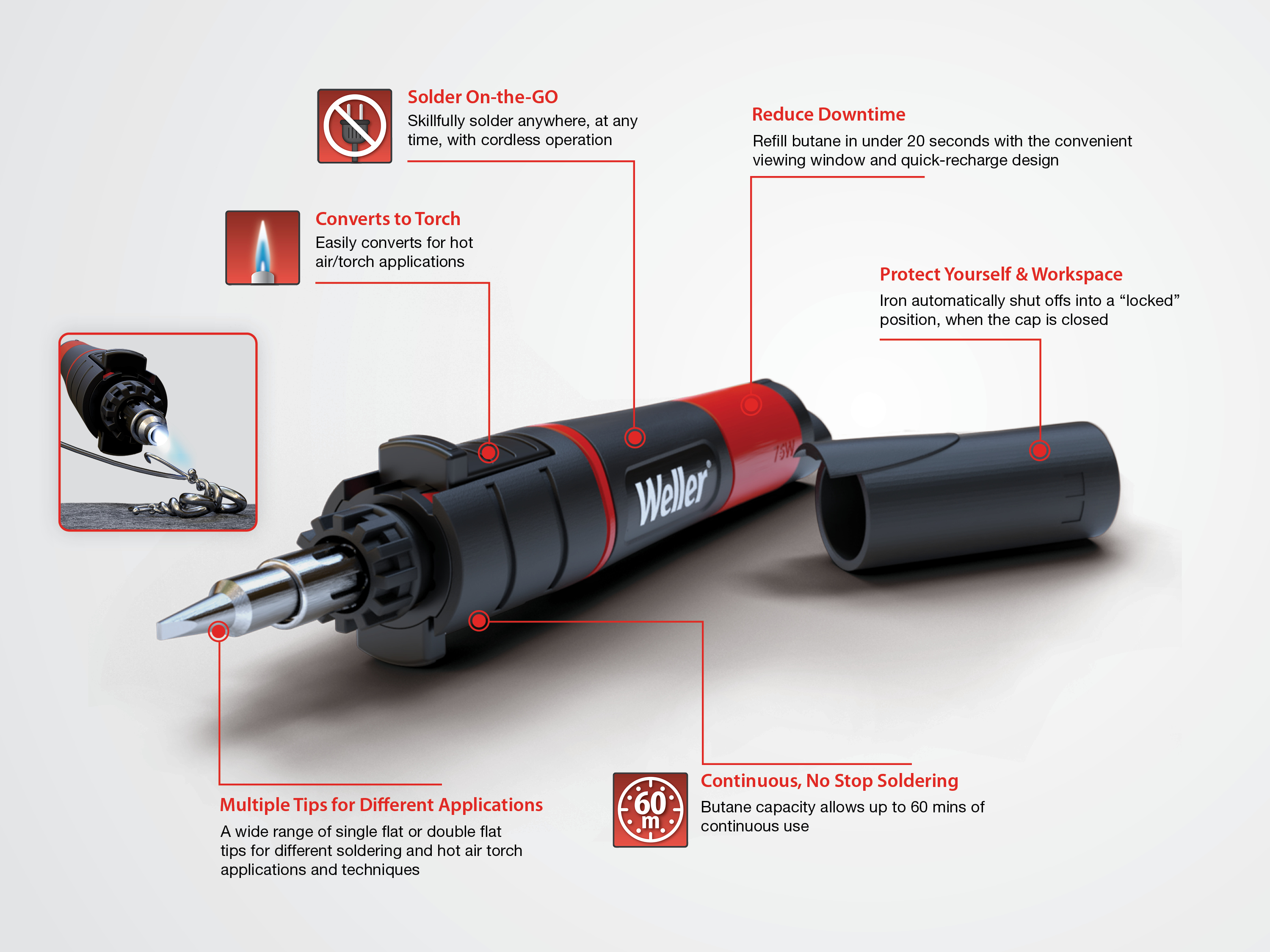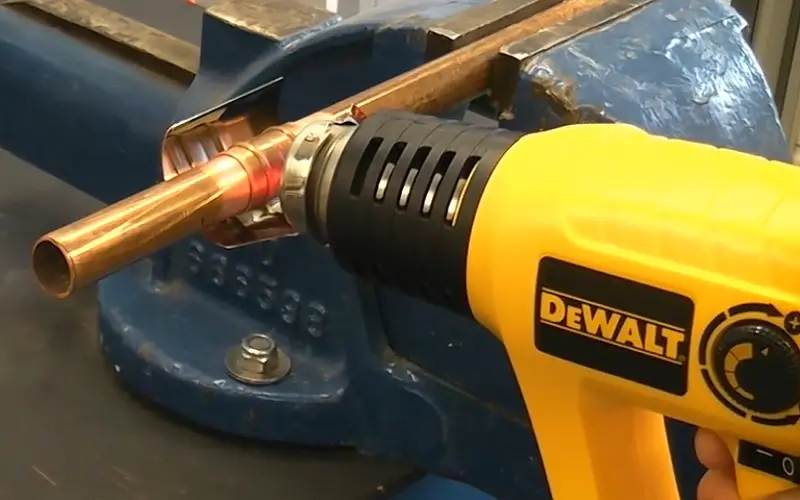Yes, you can solder with a heat gun, but it requires a specific type of heat gun. A heat gun with adjustable temperature settings and a focused nozzle can be used for soldering projects.
Soldering with a heat gun can be a convenient and efficient method, especially for larger or heat-sensitive components. The controlled heat output of a heat gun allows for precise soldering without the risk of damaging surrounding materials.
By understanding the proper techniques and safety precautions, you can effectively use a heat gun for soldering various electronic or DIY projects.
Let’s explore the process of soldering with a heat gun and its applications in more detail.
Contents
Types Of Soldering
Soldering is a crucial process in electronics and metalworking where two or more metal components are joined together using a filler material called solder.
There are different methods of soldering, each with its own advantages and applications. This article will explore two main types of soldering: Traditional Soldering and Heat Gun Soldering.
Traditional Soldering
Traditional soldering is the most widely used method and involves using a soldering iron with a heated metal tip. The soldering iron is held in one hand and the solder wire in the other.
The solder wire is then melted onto the joint using the heat from the soldering iron tip. As the solder cools, it creates a strong bond between the components, forming an electrical and mechanical connection.
This method has been used for decades and is favored for its precision and control. It allows for intricate soldering work, making it ideal for delicate electronic circuits and small components.
The soldering iron comes in various wattages, allowing the user to choose the suitable temperature for their specific project.
Traditional soldering requires a steady hand and practice to achieve good results. It also requires a proper workspace with ventilation to avoid inhaling the fumes produced by the solder and flux.
The soldering iron tip needs to be cleaned regularly to ensure proper conductivity and efficient heat transfer.
Heat Gun Soldering
Heat gun soldering is a relatively newer method of soldering that utilizes a heat gun instead of a soldering iron. A heat gun is a handheld device that blows hot air at high temperatures, typically between 100°C to 650°C (212°F to 1202°F).
This method is commonly used in industrial applications where large components or surfaces need to be soldered. Heat gun soldering is advantageous in situations where a soldering iron may not provide enough heat or where a larger surface area needs to be heated evenly.
The hot air emitted by the heat gun melts the solder wire, which can then be flowed onto the joint, similar to traditional soldering.
It’s important to note that heat gun soldering requires caution and proper technique. The high temperatures produced by the heat gun can damage sensitive components if not used correctly.
Additionally, appropriate protective gear, such as heat-resistant gloves, should be worn to avoid burns. While heat gun soldering is not as precise as traditional soldering, it offers advantages in terms of speed, coverage, and versatility.
It allows for quick soldering of large areas or components that cannot be easily soldered with a soldering iron. However, it may not be suitable for intricate electronic work or small delicate components, where traditional soldering shines.
Choosing The Right Heat Gun
Temperature control is essential for precise soldering with a heat gun.
Air flow control determines the intensity of heat directed towards the soldering area.
Step-by-step Heat Gun Soldering
Soldering with a heat gun is a useful skill that can come in handy for various DIY projects. While it may seem daunting at first, following a step-by-step approach can help you achieve successful results.
In this guide, we’ll walk you through the process of heat gun soldering, covering essential steps such as cleaning the surface, tinning the tip, positioning the heat gun, and applying heat and solder.
Cleaning The Surface
Before you begin soldering with a heat gun, it’s crucial to ensure that the surface you’ll be working on is clean and free from any debris or contaminants.
Using a mild solvent or rubbing alcohol, gently clean the area where the solder will be applied, ensuring a smooth and unobstructed surface for the solder to bond effectively.
Tinning The Tip
Tinning the tip of the heat gun is a crucial preparatory step that involves applying a small amount of solder to the tip to create a thin, uniform coating.
This process helps to improve heat transfer and ensures better conductivity when soldering. To tin the tip, heat the gun to the appropriate temperature and then carefully apply a small amount of solder to the tip, ensuring an even coating.
Positioning The Heat Gun
Proper positioning of the heat gun is essential to ensure precise and effective soldering.
Position the heat gun at an optimal distance from the surface, taking into account the specific requirements of the material being soldered and the type of solder being used.
Ensure that the heat gun is held steady and at the correct angle to facilitate smooth and controlled application of heat.
Applying Heat And Solder
With the surface cleaned, the tip tinned, and the heat gun properly positioned, it’s time to apply heat and solder. Start by directing the heat gun towards the soldering area, heating the surface evenly.
Once the surface reaches the appropriate temperature, apply the solder, ensuring that it flows smoothly and bonds securely to the surface. Keep a steady hand and monitor the soldering process closely to achieve desired results.

Tips And Techniques For Successful Heat Gun Soldering
When it comes to successful heat gun soldering, having the right tips and techniques is crucial. These techniques can make a significant difference in the quality of your soldering work and ensure a successful outcome.
Here, we will explore essential tips and techniques for using a heat gun for soldering.
Using Flux
Flux is essential for successful heat gun soldering as it helps to remove any oxidation on the metal surfaces, making it easier for the solder to bond.
Apply a small amount of flux to the area that needs soldering before heating it with the heat gun. This helps to ensure a smooth and strong solder joint.
Avoiding Overheating
One must be cautious not to overheat the components during soldering as it can damage them.
It’s important to keep the heat gun at a safe distance from the components and to continuously monitor the temperature to avoid overheating.
Overheating can also lead to the degradation of the solder, resulting in a weaker joint.
Working With Different Types Of Solder
It’s crucial to select the appropriate solder for the specific project. Different types of solder have varying melting points, so it’s important to choose the right type of solder that matches the temperature capabilities of the heat gun.
Additionally, understanding the composition of the solder and the surface being soldered is essential for successful soldering.
Frequently Asked Questions Of Can You Solder With A Heat Gun
Can I Use A Regular Heat Gun For Soldering?
No, a regular heat gun is not suitable for soldering as it can overheat and damage delicate electronic components.
Is A Heat Gun Hot Enough To Melt Solder?
A heat gun can reach temperatures high enough to melt solder effectively. It is a versatile tool often used in soldering and other applications that require intense heat. With its adjustable temperature settings, it provides precise control for various soldering tasks.
Can You Use A Heat Gun For Solder Fittings?
Yes, you can use a heat gun for solder fittings. Heat guns provide controlled heat that helps melt solder and join fittings together securely.
Make sure to use the heat gun at the appropriate temperature and follow safety precautions to avoid damaging the fittings or causing any harm.
Can You Reflow Solder With A Heat Gun?
Yes, you can reflow solder with a heat gun. It’s an alternative to using a soldering iron. However, it requires skill and precision to avoid damaging components.
Conclusion
Soldering with a heat gun is a versatile technique for various projects. Remember to practice safety measures and consider the type of materials being soldered.
With proper tools and knowledge, you can achieve successful soldering results with a heat gun. Experiment and hone your skills for optimal outcomes.

